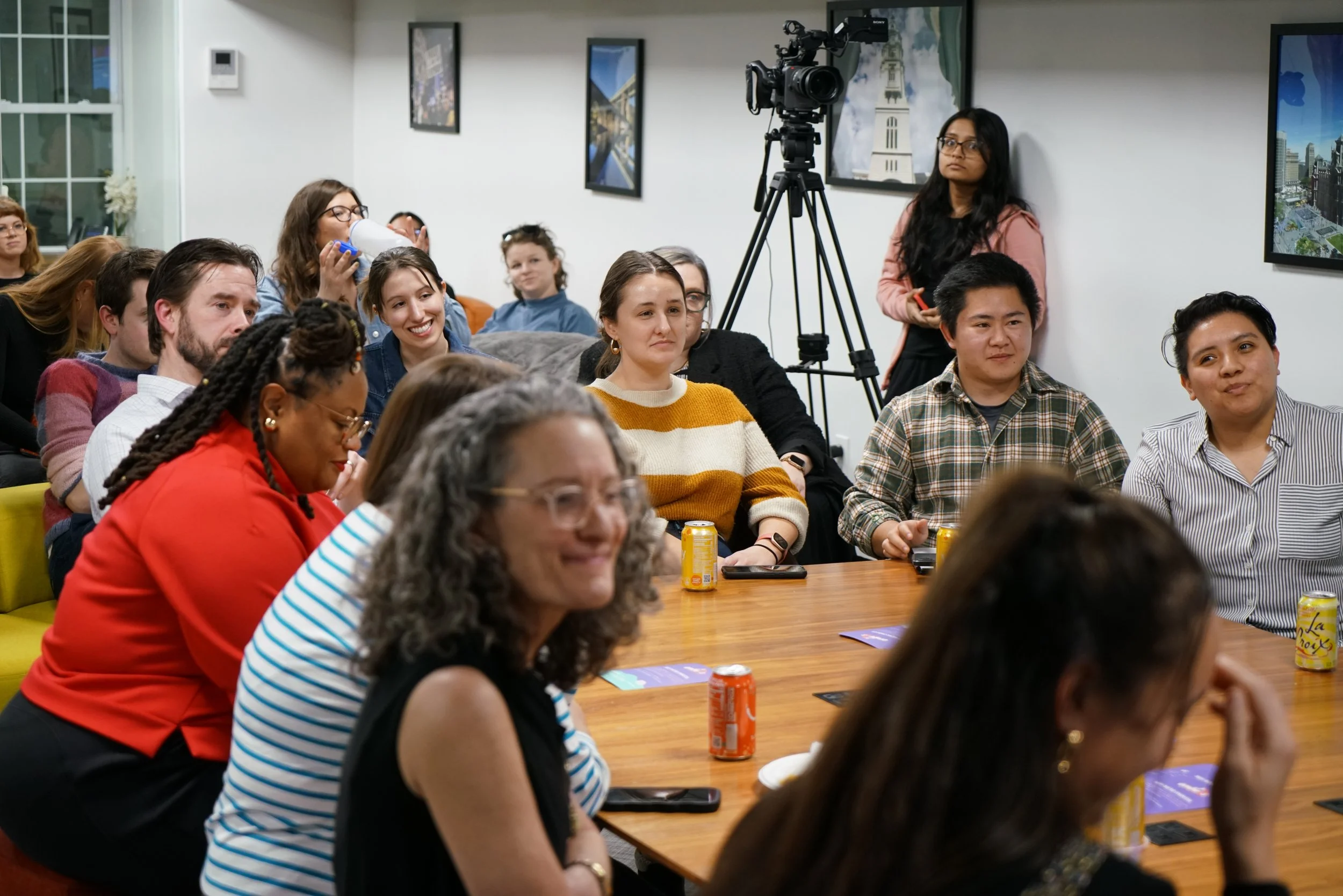Designing for Democracy: Why the Built Environment Matters
Last Tuesday, we wrapped up the pilot of our Designing for Democracy event series — four evenings of conversation, imagination, and experimentation around one central question: how can our built environments make democracy more tangible, accessible, and alive?
This post kicks off a short series summarizing what we explored together, what we learned, and where we’re headed next.
Part I: Spaces for Democracy
The first session invited professionals across disciplines — planners, designers, organizers, and cultural workers — to share what democracy means in their work. How do their projects, organizations, or company values nurture democracy, both actively and passively?
Across presentations, a clear throughline emerged: democracy requires space for interaction.
At its core, democracy is rooted in the ability to congregate — to see and be seen, to share stories, to encounter perspectives different from our own. Physical space isn’t just a backdrop for democracy; it’s the medium through which it’s practiced.
Participants reflect on the role of public space in democracy during the first Designing for Democracy event. Photo by Nate Meixell for Ombuds.
The Street as a Stage for Democracy
Community activist Vivian Chang offered a powerful illustration from Philadelphia’s Chinatown, where residents have been organizing against the construction of a proposed arena. During her presentation, she shared photos of demonstrations filling the streets — one in particular showing a group of high school students marching at the front line with handmade banners.
Vivian told us how these students started the day as bystanders, simply passing through on their way home. But after stopping to ask what was happening, they learned how the project threatened one of the city’s most significant cultural enclaves. They chose to stay — not just to observe, but to participate. Four hours later, they were still there, participating on the front line.
That moment — curiosity leading to conversation leading to participation — captures the essence of democracy. It’s the kind of transformation that can only happen when public space makes such encounters possible.
Image courtesy of Vivian Chang and Asian Americans United, presented during Designing for Democracy Pt I.
Designing for Encounters
Active democracy depends on people from different socio-economic and cultural backgrounds coming into contact with one another. It depends on environments that allow us to witness, listen, and respond.
When our public spaces invite mingling — between strangers, neighbors, and stories — they become conduits for empathy and understanding. They give rise to what we might call spatial citizenship: a shared awareness that our collective wellbeing is built in sidewalks, plazas, parks, and streets just as much as in policies or ballots.
In this sense, the design of the built environment doesn’t just shape our experiences of place; it shapes our capacity to practice democracy itself.
Beyond the Ballot Box
Democracy cannot be distilled to voting alone. It is the practice of advocating for ourselves, our neighbors, and those whose voices are often left out of decision-making. But advocacy requires awareness — and awareness grows through exposure, dialogue, and connection.
We can’t advocate for what we don’t know. And we can’t know what we don’t encounter.
That’s why public spaces that facilitate interaction — across difference, across perspective, across lived experience — are not luxuries. They are democratic infrastructure.
Looking Ahead
As the Designing for Democracy series unfolded, each session peeled back another layer of this question: how can the built environment actively support the democratic process?
In the months ahead, we’ll be looking for support to distill the ideas, discussions, and insights from this series into a Facilitation Guide and Design & Policy Precedent Toolkit — resources to help planners, designers, and community partners apply these democratic design principles in practice.
In the next post, we’ll dive into Part II, where participants were asked to imagine what tangible design elements — from plazas to parklets — might enable democracy to thrive.
Stay tuned, and if you joined us for the first session, we’d love to hear:
What spaces make you feel most connected to your community — and most empowered to speak, listen, and belong?


